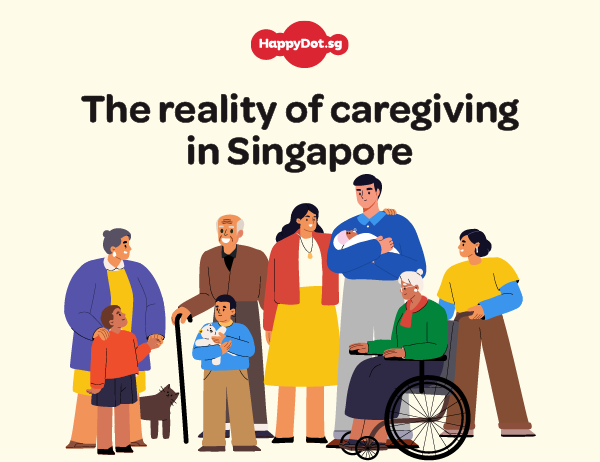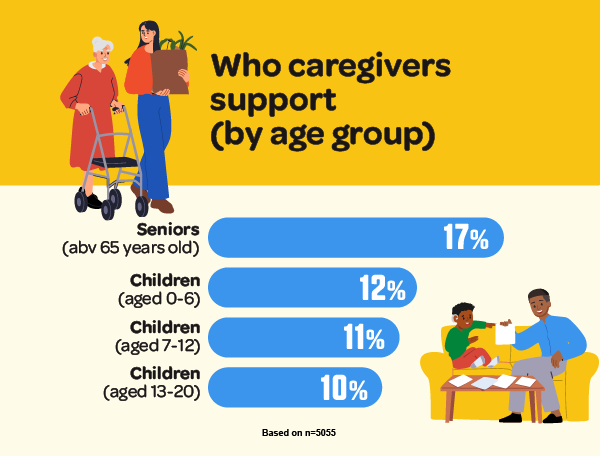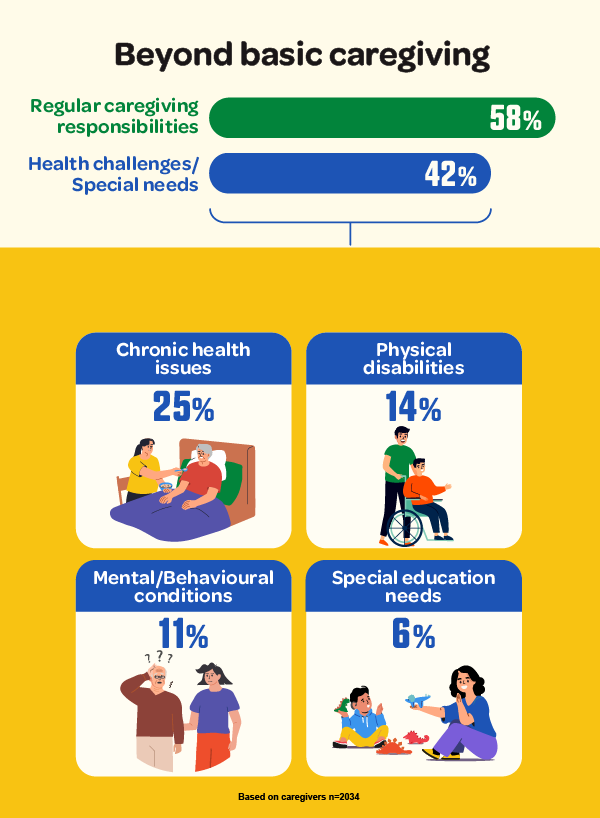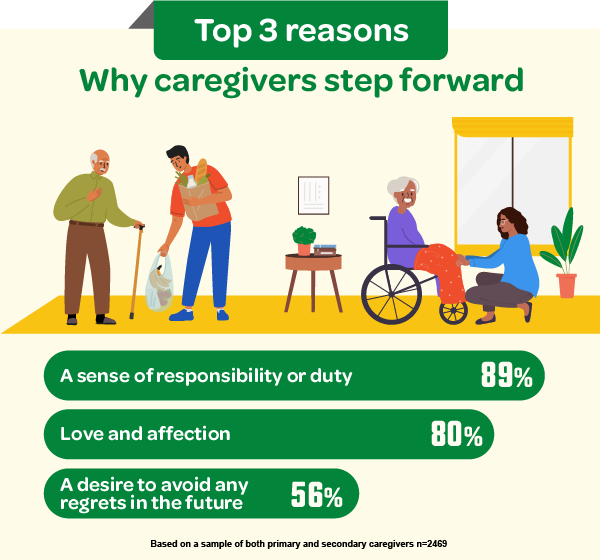Reality of caregiving in Singapore: What the Numbers Reveal

The Reality of Caregiving in Singapore
Singapore’s caregiving landscape reveals a complex web of family responsibility, with data shedding light on who provides care, to whom, and what drives these essential relationships. We reveal the caregiving patterns among 5,055 HappyDotters which provides unprecedented insight into this critical aspect of Singaporean society.
The Scope of Primary Caregiving

The data reveals that caregiving responsibilities are widespread but unevenly distributed across different age groups. Among primary caregivers, 17% provide care to seniors aged 65 and above, making elderly care the most common caregiving responsibility. This statistic underscores Singapore’s aging population challenge, where nearly one in five HappyDotters is actively supporting older adults.
Children represent the next significant caregiving demographic. 12% of respondents care for children aged 0-6, while 10% support children aged 7-12. Caregiving responsibilities are lower with older children with only 10% caring for teenagers aged 13-20 and 8% supporting young adults aged 21-60.
This pattern suggests that caregiving intensity typically peaks during early childhood and later life stages.
The Challenge of Special Needs Care

Beyond basic caregiving, the data reveals significant challenges around special needs support. Among those providing primary care, 42% have dependents with health challenges or special needs. It is further observed that 25% have dependents with chronic health issues, making this the most prevalent condition requiring specialized attention; 14% have dependents with physical disabilities; 11% have dependents with mental or behavioural conditions, and 6% have dependents that require special education needs support.
These figures underscore the fact that caregiving is not just about daily routines—it often involves complex medical, developmental, and emotional needs. For many caregivers, this means balancing specialist care, navigating healthcare systems, and managing heightened stress levels.
Motivations: Why Caregivers Step Forward

Caregiving motivations in Singapore reveal both cultural and emotional underpinnings. The strongest driver is a sense of responsibility or duty, cited by 89% of both primary and secondary caregivers. This reflects Singapore’s long-held cultural norm where supporting one’s parents or loved ones is regarded as a moral responsibility rather than an option. The second most common motivator is love and affection (80%), while 56% of caregivers highlight a desire to avoid future regrets as another key factor.
This hints at a quiet tension—while love and duty remain strong, many families also take on caregiving roles driven by the fear of future remorse.
Implications for Policy and Society
These statistics paint a picture of a society where caregiving responsibilities are significant but are significant and sustained out of love and responsibility for most families. However, they also reveal potential stress points that require attention:
Special Needs Gap: The high prevalence of chronic health issues (25%) and physical disabilities (14%) among care recipients suggests a need for enhanced support services and caregiver training programs.
Support Network Limits: The data suggests 4 / 10 of HappyDotters have primary caregiving responsibilities, supporting care recipients across diverse age profiles. This highlights the risk of burnout when caregiving falls solely on one individual, underscoring the need for support beyond the immediate family.
Looking Ahead: Building a Sustainable Caregiving Ecosystem
Singapore’s caregiving landscape reflects both the strength of family ties and the pressures of demographic transition. As life expectancy rises and medical advances extend the lives of those with complex needs, caregiving will only grow in scope and intensity.
The data makes clear that families alone cannot carry this burden indefinitely. Sustaining caregiving in Singapore will require a multipronged approach: caregiver wellness programs to reduce burnout, respite services to offer relief, and community-based initiatives to strengthen shared responsibility.
Share your views on ongoing social issues in Singapore through our surveys and check out fresh insights of What Singapore Thinks every month!
Mingle with other HappyDotters! LIKE our Facebook and FOLLOW our Instagram to know more about us.
